
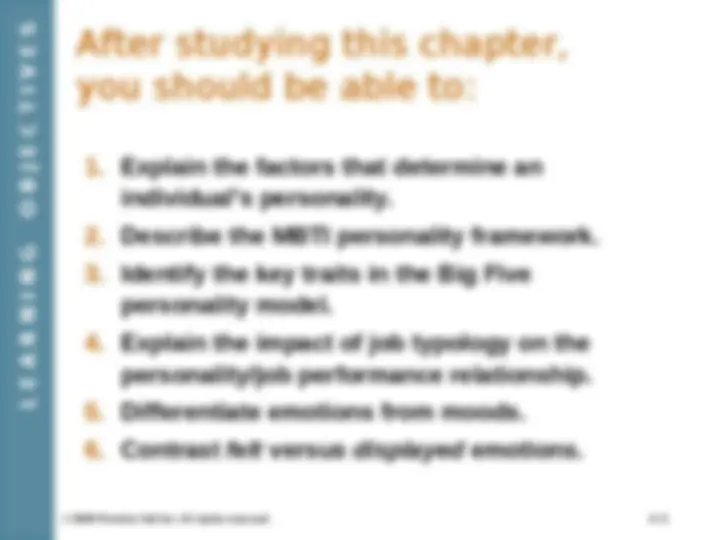
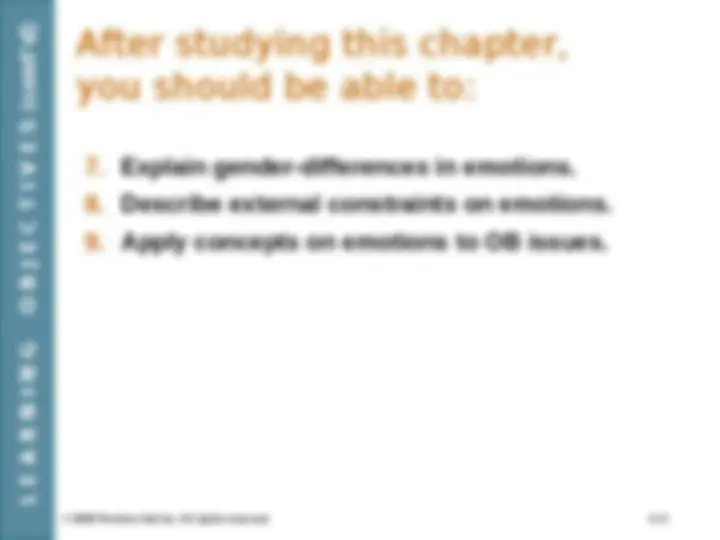
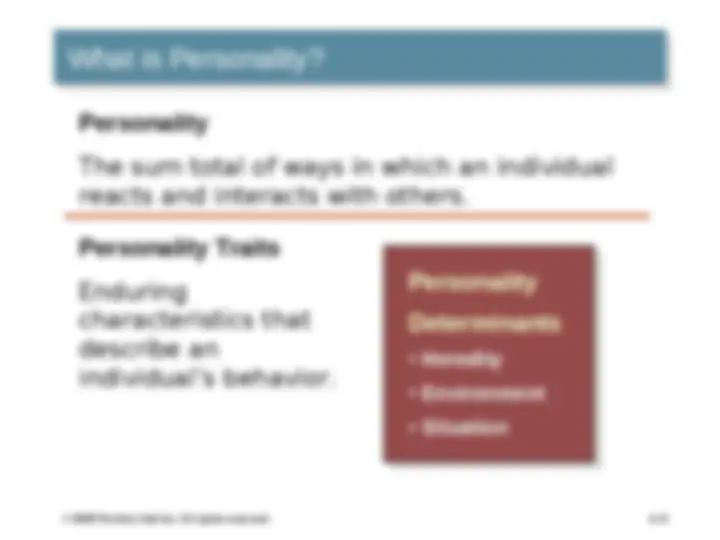
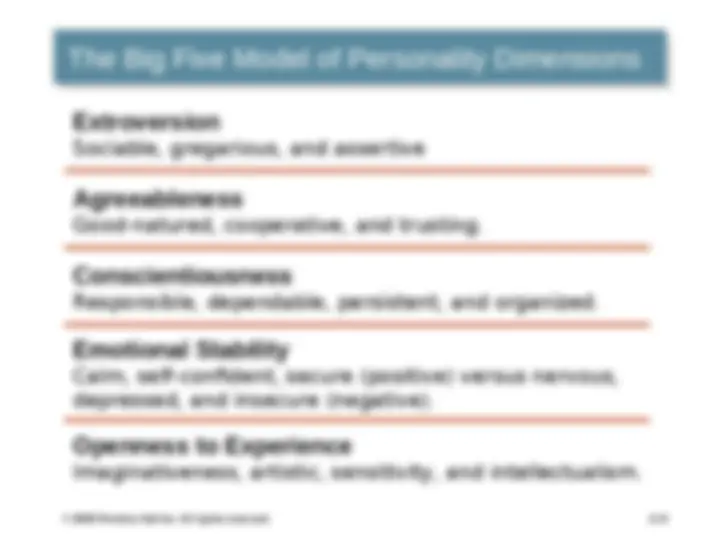
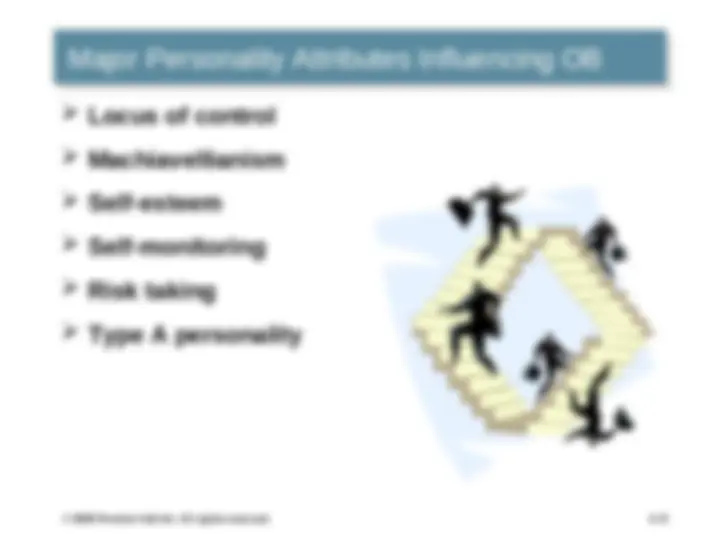
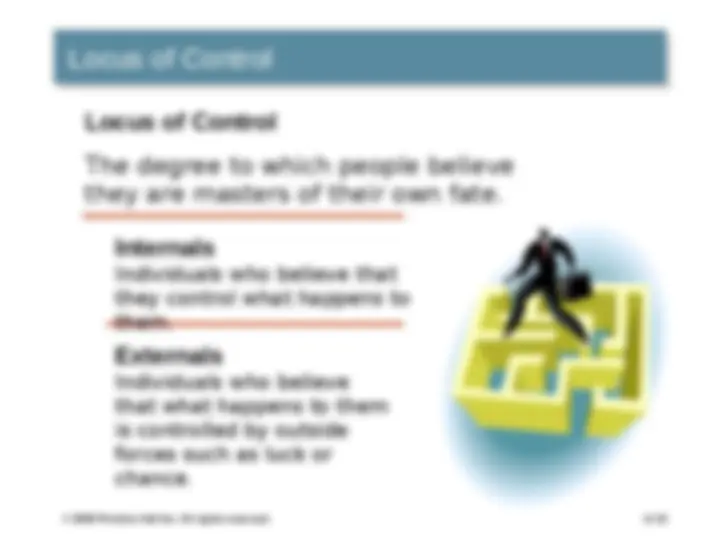
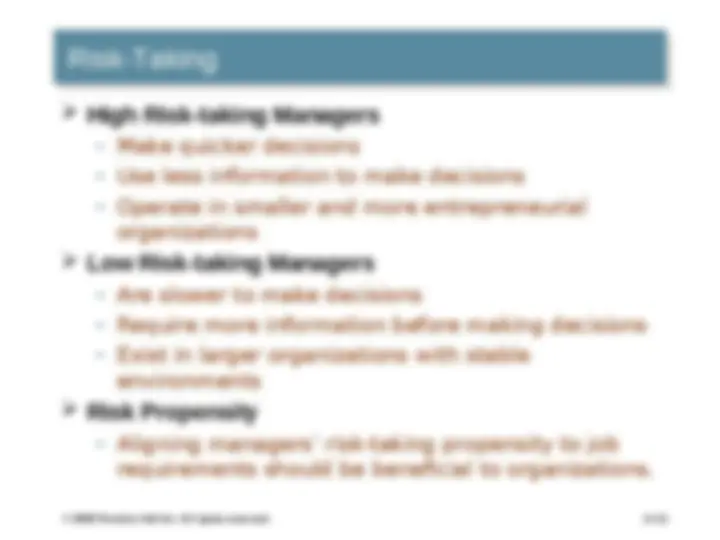
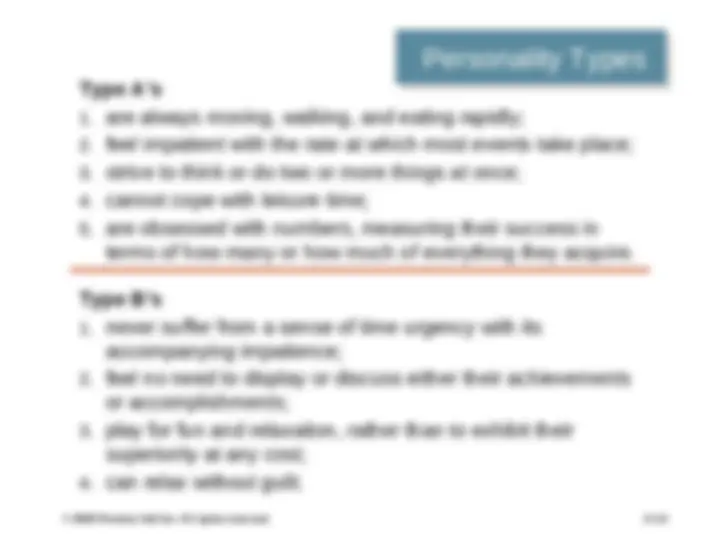
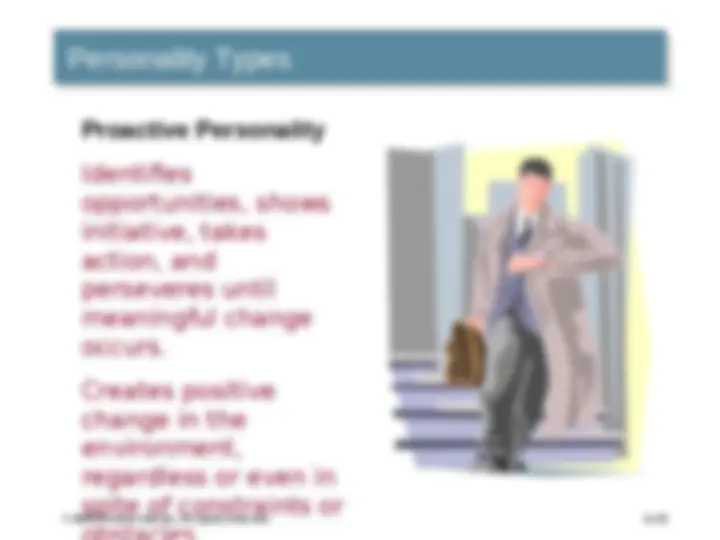
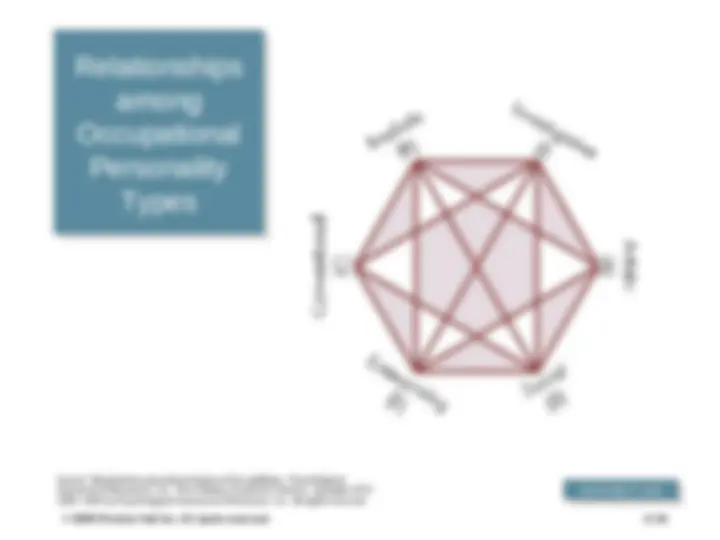
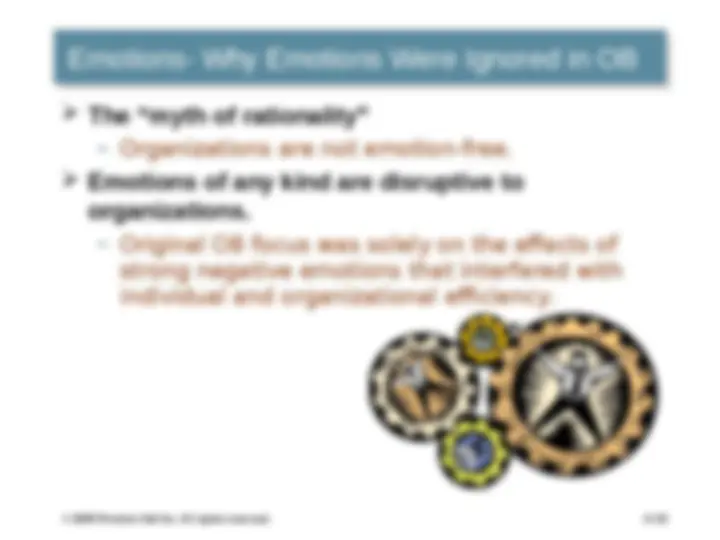
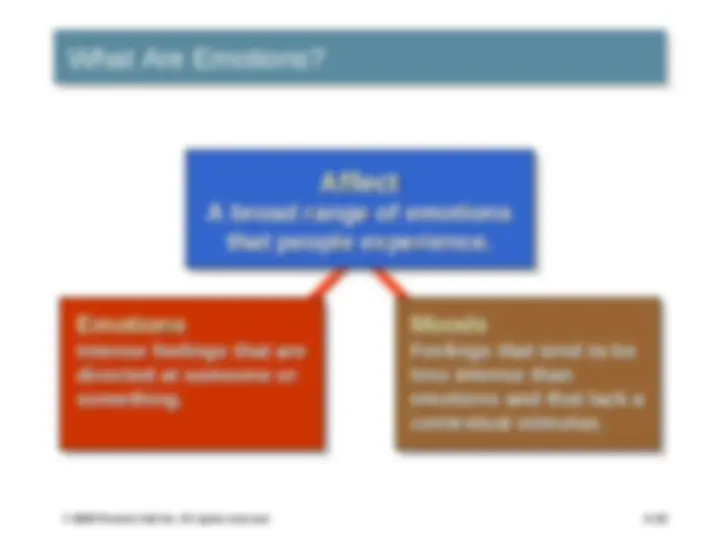
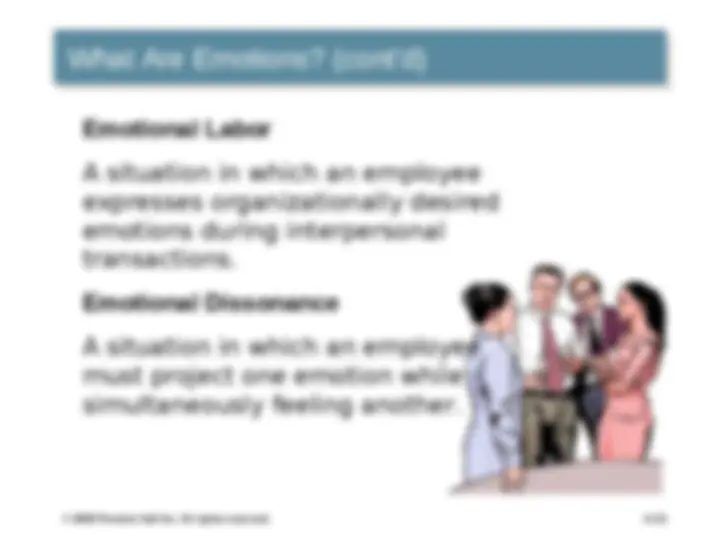
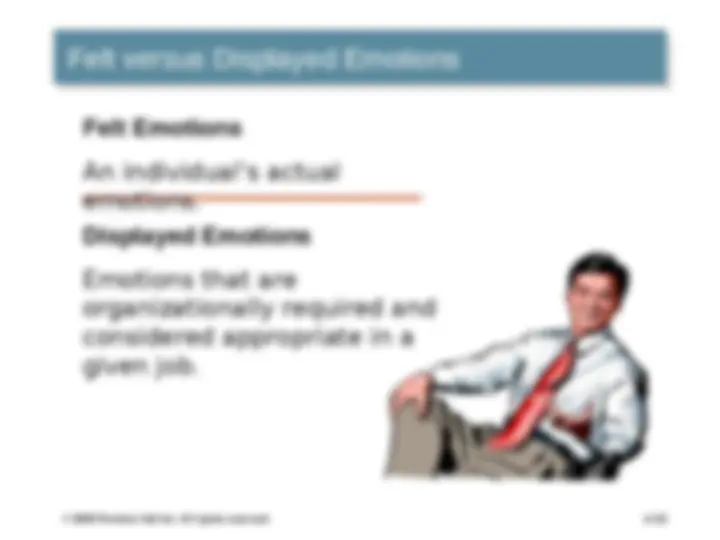
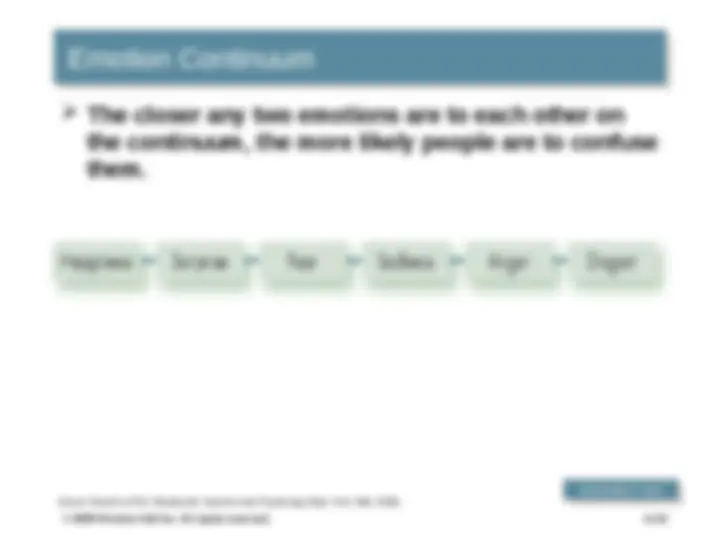
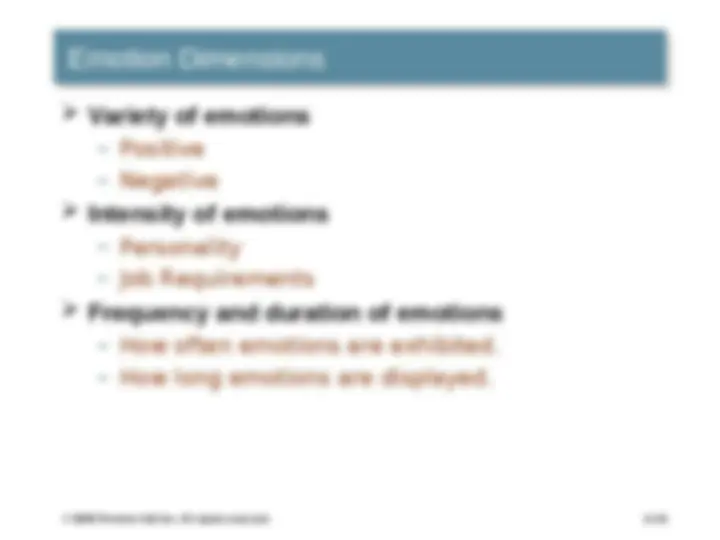
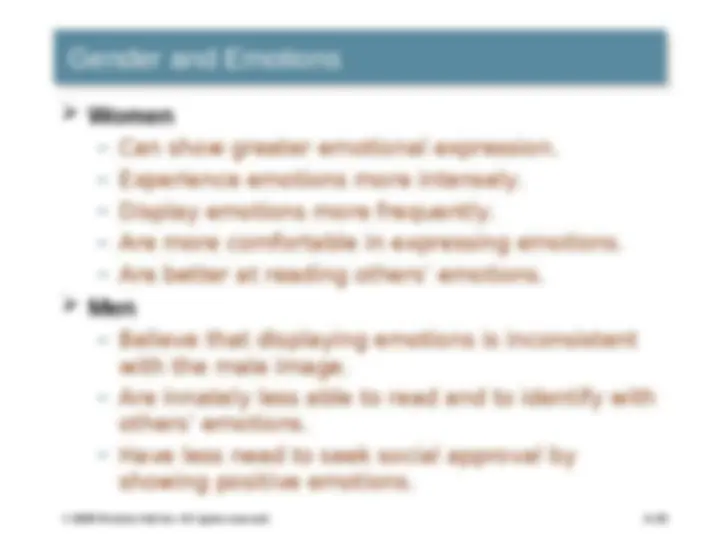
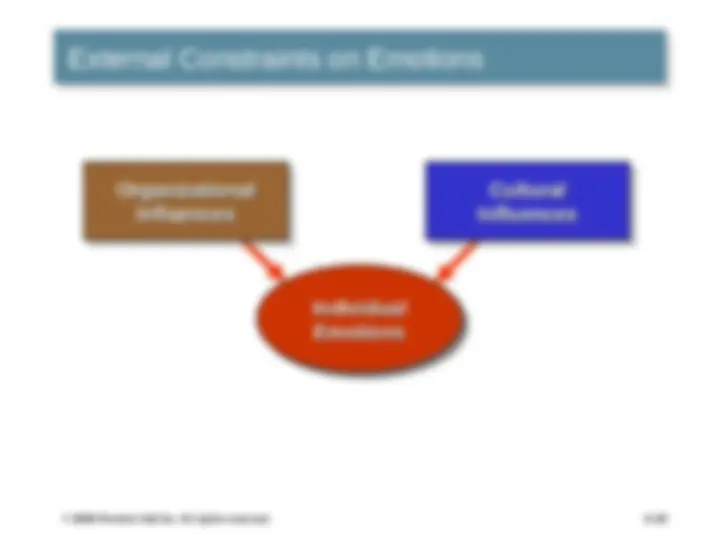

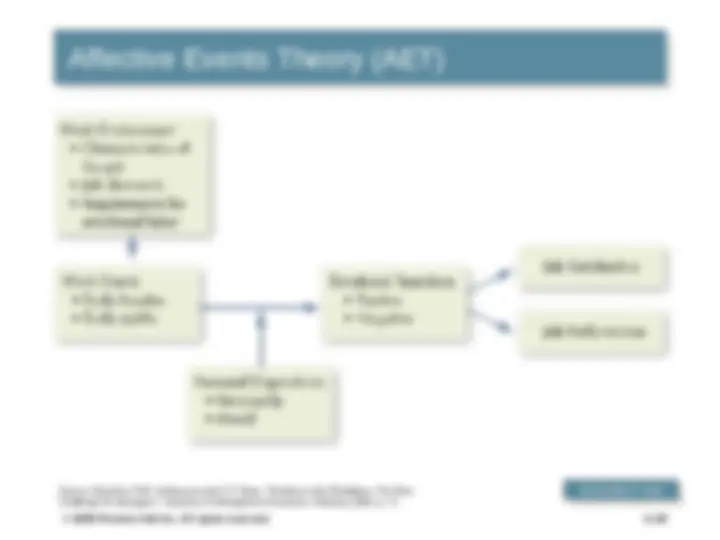
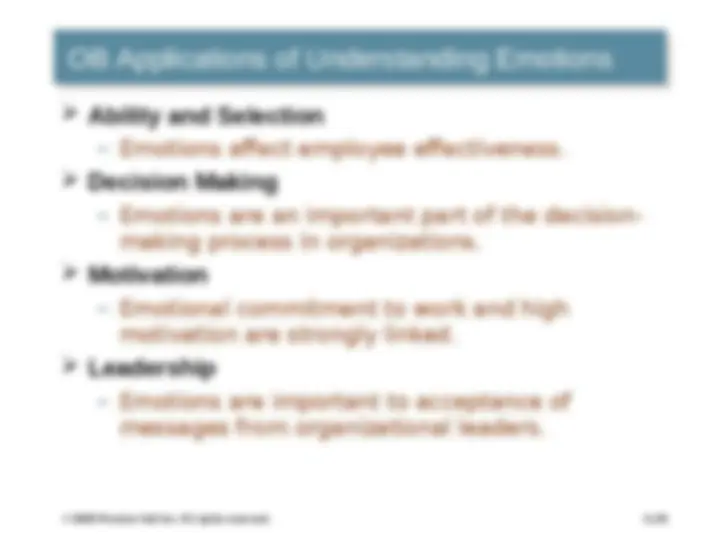
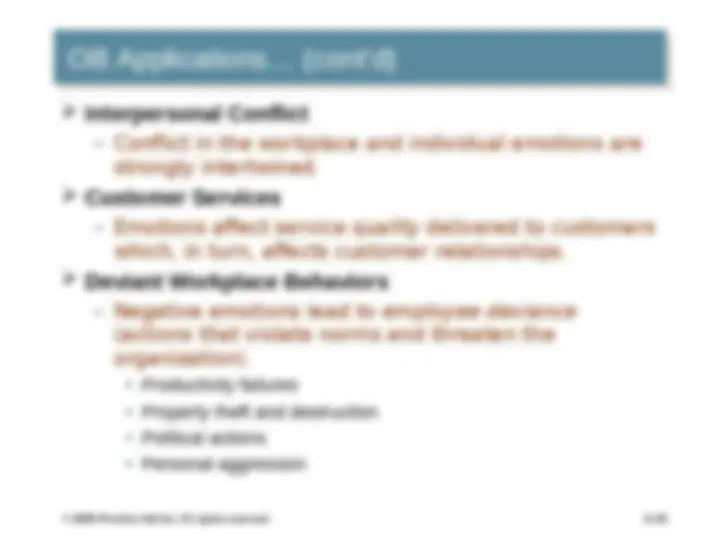
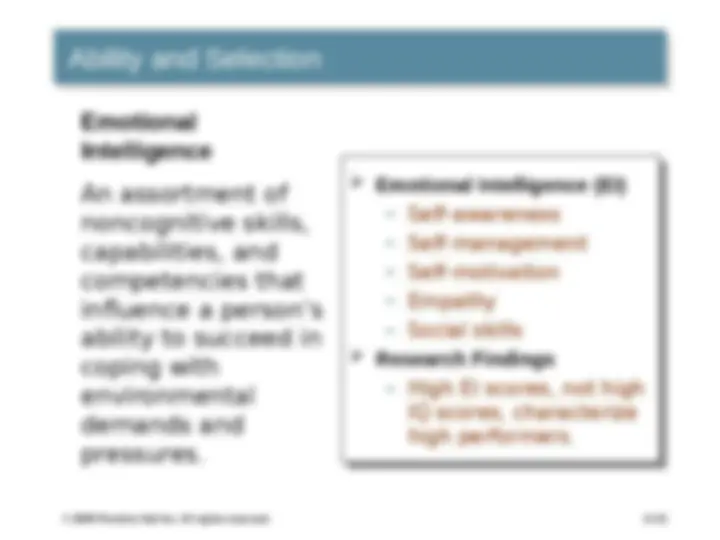


Study with the several resources on Docsity

Earn points by helping other students or get them with a premium plan


Prepare for your exams
Study with the several resources on Docsity

Earn points to download
Earn points by helping other students or get them with a premium plan
Community
Ask the community for help and clear up your study doubts
Discover the best universities in your country according to Docsity users
Free resources
Download our free guides on studying techniques, anxiety management strategies, and thesis advice from Docsity tutors
This powerpoint presentation by charlie cook, based on stephen p. Robbins' 'organizational behavior' textbook, explores the relationship between personality, emotions, and job performance. Topics include the myers-briggs type indicator, the big five model of personality dimensions, emotions and their impact on the workplace, and gender differences in emotions. The document also discusses the concept of locus of control, machiavellianism, self-esteem, and risk-taking.
Typology: Thesis
1 / 31

This page cannot be seen from the preview
Don't miss anything!
























stephen p. robbins
e l e v e n t h e d i t i o n
e l e v e n t h e d i t i o n
S T E P H E N S T E P H E N (^) P.P. R O B B I N SR O B B I N S EE^ LL^ EE^ VV^ EE^ NN TT HH^ EE DD^ II^ TT II OO NN © 2005 Prentice Hall Inc. All rights reserved.© 2005 Prentice Hall Inc. All rights reserved. W W W. P R E N H A L L. C O M / R O B B I N S W W W. P R E N H A L L. C O M / R O B B I N S PowerPoint PresentationPowerPoint Presentation by Charlie Cook by Charlie Cook
Chapter 4
After studying this chapter, you should be able to:
L E A R N I N G
O B J E C T I V E S (cont’d)
Personality
The sum total of ways in which an individual reacts and interacts with others.
Personality Traits
Enduring characteristics that describe an individual’s behavior.
Personality Determinants
Personality Determinants
Myers- Briggs Sixteen Primary Traits
Myers- Briggs Sixteen Primary Traits
Extroversion Sociable, gregarious, and assertive
Agreeableness Good-natured, cooperative, and trusting.
Conscientiousness Responsible, dependable, persistent, and organized.
Openness to Experience Imaginativeness, artistic, sensitivity, and intellectualism.
Emotional Stability Calm, self-confident, secure (positive) versus nervous, depressed, and insecure (negative).
Locus of Control
The degree to which people believe they are masters of their own fate.
Internals Individuals who believe that they control what happens to them. Externals Individuals who believe that what happens to them is controlled by outside forces such as luck or chance.
Conditions Favoring High Machs
Conditions Favoring High Machs
Machiavellianism (Mach) Degree to which an individual is pragmatic, maintains emotional distance, and believes that ends can justify means.
(^) High Risk-taking Managers
Type A’s
Type B’s
Personality Types
Personality Types
Personality-Job Fit Theory (Holland)
Identifies six personality types and proposes that the fit between personality type and occupational environment determines satisfaction and turnover.
Holland’s Typology of Personality and Congruent Occupations
Holland’s Typology of Personality and Congruent Occupations
E X H I B I T 4E X H I B I T 4–2–
(^) The “myth of rationality”
(^) Emotions of any kind are disruptive to
organizations.
MoodsMoods Feelings that tend to be Feelings that tend to be less intense than less intense than emotions and that lack a emotions and that lack a contextual stimulus. contextual stimulus.
Moods Moods Feelings that tend to be Feelings that tend to be less intense than less intense than emotions and that lack a emotions and that lack a contextual stimulus. contextual stimulus.
EmotionsEmotions Intense feelings that are Intense feelings that are directed at someone or directed at someone or something. something.
Emotions Emotions Intense feelings that are Intense feelings that are directed at someone or directed at someone or something. something.
A broad range of emotions A broad range of emotions that people experience. that people experience.
A broad range of emotions A broad range of emotions that people experience. that people experience.